- Home
- Community
- Business
-
Tourism
- Towns
- Accommodation
- Attractions
- Activities
- Gallery
- Maps
- Outings
- Pet-friendly accommodation
- S.A. Distance Chart
- Tide Chart
- Tourism Offices
- About Us
- Products
- User Menu
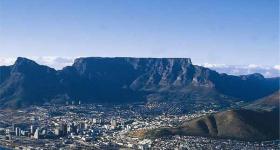 Table Mountain
Table Mountain
One of South Africa's most spectacular landmarks, Table Mountain towers 1.086m above the 'Mother City', and on a clear day can be seen from as far as 200km out to sea. A quick trip up the cable car is a must, offering breathtaking views of the city and coastline from the many view points at the top. For the more energetic pack a picnic and a map and hike up one of the mountain paths, drinking in the spectacular scenery and the rich diversity of flora and fauna. No trip to Cape Town is complete without a visit to this splendour of nature.
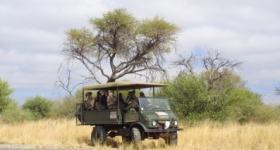 The Kruger National Park
The Kruger National Park
The Kruger National Park is the largest game reserve in South Africa. Nearly 2 million hector of land with an extremely high diversity of life forms and archaeological sights are protected in the oldest National Park of South Africa. The park is home to an impressive number of species: 336 trees, 49 fish, 34 amphibians, 114 reptiles, 507 birds and 147 mammals.Furthermore, it preserves evidences of early human settlement such as the Thulamela Stone Citadel or ore mines.Today the Kruger National Park is one of the top tourist destinations in South Africa and attracts about 1.25 million guests per year. Despite this huge number of visitors, the park managed to align nature conservation with tourism very well. Today it is a world leader in advanced environmental management techniques and policies.
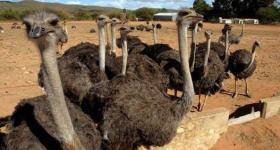 Outshoorn Ostrich Ranch and Cango Caves
Outshoorn Ostrich Ranch and Cango Caves
Outshoorn became a thriving town in the early 20 th century when Ostrich feathers were at the height of fashion, and is now the Ostrich capital of the world. Visit one of the many ranches and learn more about these huge flightless birds, try your hand at riding one and take home an enormous painted egg as a souvenir! The Cango caves are situated 28km outside of Oudtshoorn, and are well-known for their fascinating limestone formations. The cave extends for 5.3km in a series of connected chambers, the largest at 107m being the Grand Hall. Experienced guides take you through the caves, and one can choose the length and degree of difficulty of the tour. A must see!
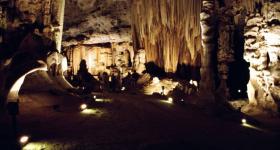 Cango Caves
Cango Caves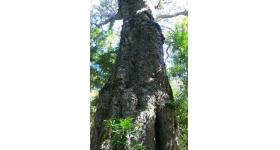 giant specimen, reaching 40m skywards and a girth near to 9m. Sanral has pledged to assist in improvements in efforts to attract more tourists, with the construction of a secure public parking area that can accommodate up to 74 cars. The famed Tsitsikamma (a Khoi word meaning “place of abundant water”) Big Tree lies within the boundaries of the spectacular Garden Route National Park, on South Africa’s southern coast. The majestic tree is open to viewing all year around. Interested visitors can park their cars in the parking lot beside the N2 near the Paul Sauer bridge over the Storms River – often incorrectly called the Storms River bridge.The walk to the yellowwood is about 1km in total and takes about 10 minutes through lush indigenous bush. For the more advanced hiker there are two other trails starting from the same point, one of 2.6km and one of 4.2km.From the shadow of the Big Tree visitors can also gaze over the forest from a look-out deck, and the more energetic can wander down one of the trails that are accessible from this point.
giant specimen, reaching 40m skywards and a girth near to 9m. Sanral has pledged to assist in improvements in efforts to attract more tourists, with the construction of a secure public parking area that can accommodate up to 74 cars. The famed Tsitsikamma (a Khoi word meaning “place of abundant water”) Big Tree lies within the boundaries of the spectacular Garden Route National Park, on South Africa’s southern coast. The majestic tree is open to viewing all year around. Interested visitors can park their cars in the parking lot beside the N2 near the Paul Sauer bridge over the Storms River – often incorrectly called the Storms River bridge.The walk to the yellowwood is about 1km in total and takes about 10 minutes through lush indigenous bush. For the more advanced hiker there are two other trails starting from the same point, one of 2.6km and one of 4.2km.From the shadow of the Big Tree visitors can also gaze over the forest from a look-out deck, and the more energetic can wander down one of the trails that are accessible from this point.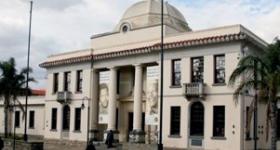 The Mandela Museum
The Mandela Museum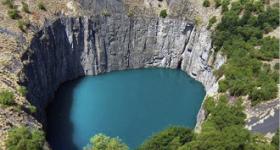 Orange rivers. Dug in the rush frenzy, the 500m wide Big Hole is now the biggest attraction of the otherwise ordinary town. By 1914 when the mine closed, over 14,5 million carats of diamonds had been removed from the earth, from the hole which descends 800 metres into the earth.The Kimberley Mine Museum consists of the old diamond-rush town, with shops, bars, banks and churches.
Orange rivers. Dug in the rush frenzy, the 500m wide Big Hole is now the biggest attraction of the otherwise ordinary town. By 1914 when the mine closed, over 14,5 million carats of diamonds had been removed from the earth, from the hole which descends 800 metres into the earth.The Kimberley Mine Museum consists of the old diamond-rush town, with shops, bars, banks and churches.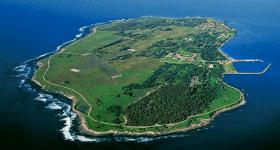 Robben Island Museum
Robben Island Museum